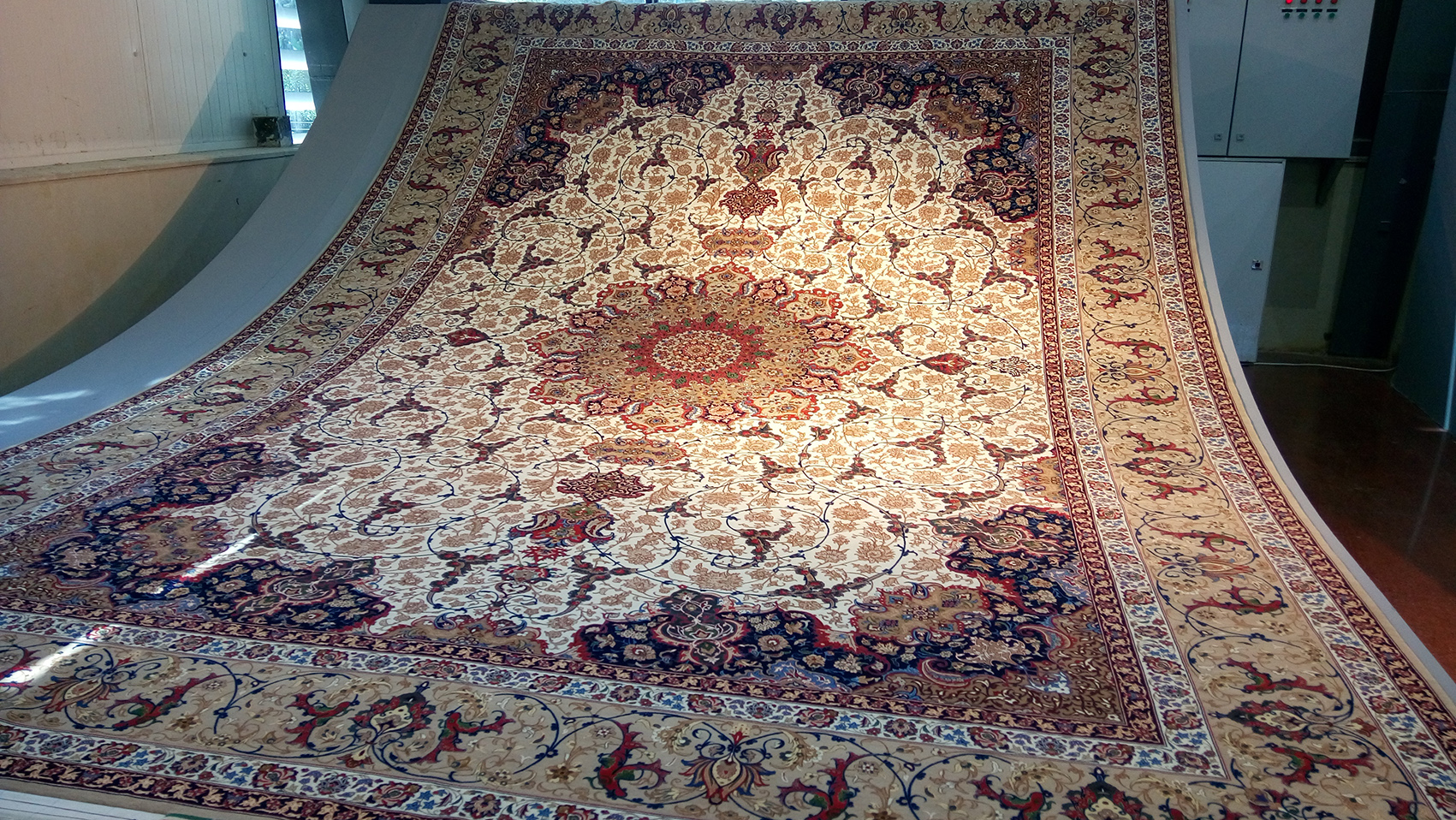The 29th edition of Iran Handmade Carpet Exhibition is rescheduled to Jan. 2 in Tehran’s International Exhibition Center, according to Farahnaz Rafe’, an official of Iran National Carpet Center.
The expo was initially scheduled to be held on August 23-29, but it was delayed due to the Covid-19 pandemic.
The four-day event will conclude on Jan. 5.
“Hand-woven rugs worth $5 million were exported from Iran during the first quarter of the current fiscal year (March 21-June 21),” said Razi Haji-Aqamiri, a member of Tehran Chamber of Commerce, Industries, Mines and Agriculture.
He noted that the export of hand-woven carpets is not expected to exceed $20 million by March 20, 2022, the end of the current Iranian year, whereas $60 million worth of rugs were exported last year.
Noting that in the past, Iran’s annual carpet exports neared $1.7 billion, Haji-Aqamiri said neither the governments led by former president, Hassan Rouhani, nor those before him took steps to improve carpet exports.
“Exports of hand-woven carpets have been on a constant decline except for the early years after the Islamic Revolution, which shows that the policies employed by subsequent governments regarding the carpet industry have been the same,” he was quoted as saying by the TCCIM news outlet.
“Such a neglectful approach is not restricted to carpet; it is also evident in other non-oil products, with the exception of some consumer items, thanks to foreign demand. All in all, the country’s conditions, approaches employed by the government and restrictions imposed by sanctions are not desirable for exports.”
The official noted that old, traditional markets of Persian carpets have all but disappeared, stressing that carpet is a cultural product that needs long-term marketing.
“You can’t replace markets such as those of the US and Europe with China and Malaysia over four, five or even 10 years. Persian carpets have been in the US and Europe for over 200 years. Furthermore, marketing for Persian carpet requires great investment to pay off and these expenses are beyond the means of the private sector,” he said.
“The government should seek to create markets by pursuing a long-term advertising plan and strategy. The revival of lost markets is virtually impossible and the government doesn’t seem to be motivated enough to spend at the present juncture.”
Haji-Aqamiri stressed that none of the governments has stuck to plans and laws for long, which is a deadly virus for the economy and exports in particular.
“At present, a handful of producers are in the business of making high-priced carpets; they are making sales to some extent but generally there are no carpet exports. Export of Persian carpet is dead,” he declared.
Elaborating on the collapse of carpet trading in the international markets, Haji-Aqamiri said, “The status of carpet has shifted in the global markets. These changes have harmed Persian carpets more than those of other countries. Today, interior designers are less inclined to recommend decorating areas with hand-knotted rugs. Carpet flooring is not as popular now as it was in the past. But it is important to account for a great share of this small market. Imagine that the total value of hand-woven carpet market is $3 billion; it is a huge difference between accounting for $2 billion of this market or $200 million. It is up to us to grab a higher share and not to hand over the market to rivals like Turkey, India and Pakistan.”
Haji-Aqamiri concluded that sanctions have weakened the position of Persian carpet in the global markets and “customers have forgotten about us due to our absence in the market”.


